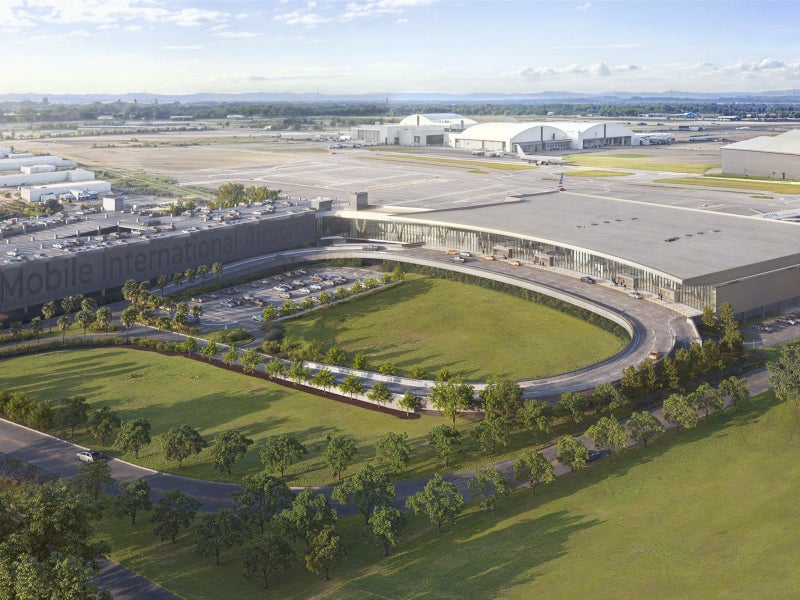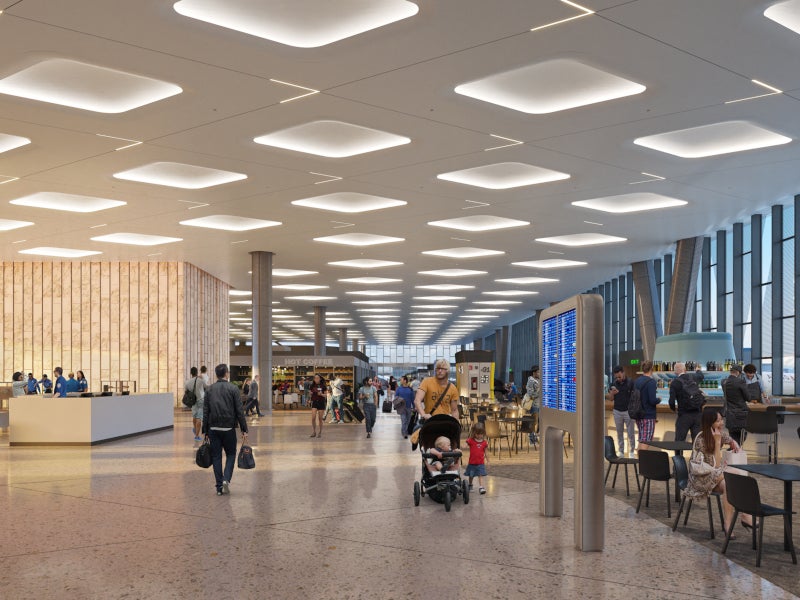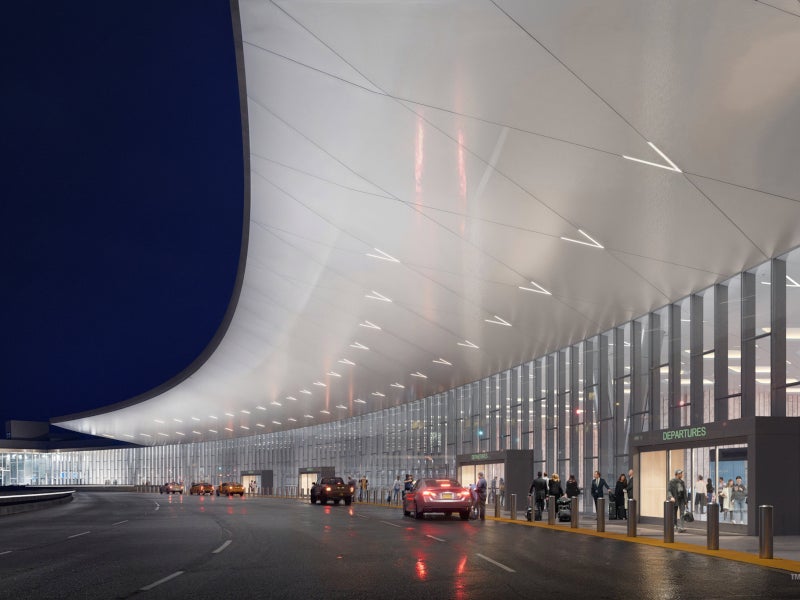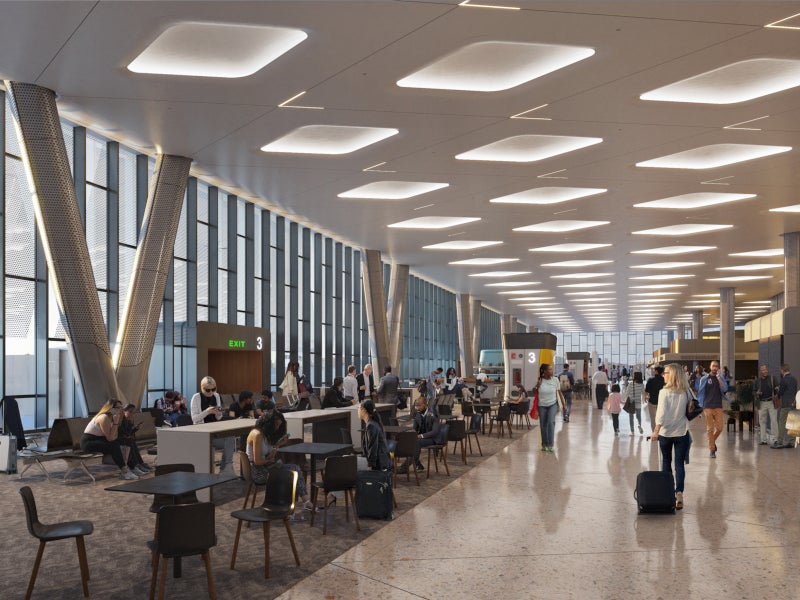Mobile International Airport (BFM), located on the Mobile Bay within the Mobile Aeroplex at Brookley in Mobile, Alabama, will be transformed with the construction of a new international passenger terminal.
Owned and operated by the Mobile Airport Authority (MAA), the project represents a significant development in improving air travel and connectivity in the region.
With an estimated investment of $160m, the new terminal will initially feature a five-gate facility with the potential to expand to 12 gates. Construction is expected to commence in 2024, with an anticipated completion in July 2025.
Location
The airport is located just off the I-10 motorway, and three nautical miles to the south of the central business district of the city.
The new terminal will be built north and slightly west of the existing terminal at BFM, which is strategically located near the Port of Mobile.
The airport serves as a critical hub for multimodal connectivity, integrating maritime, rail, trucking, and aviation operations.
It is home to the Airbus Final Assembly Line, Airbus Engineering, ST Aerospace, and Continental Motors.
Mobile International Airport new terminal details
The new terminal will be developed under phase one of the Mobile Airport Authority’s 20-year Master Plan, which has an overall estimated cost of $403m.
The terminal will cover approximately 132,000ft², with additional space for administrative (13,000ft2) and maintenance purposes (5,000ft2).
It will be smaller than the existing 162,500ft2 terminal at the airport. It will be located adjacent to existing water and sewer lines servicing the airport, ensuring essential utilities are readily available.
Phase one development will also include the construction of a parking garage, surface parking, and tarmac expansion.
Mobile International Airport design and features
The new terminal design, inspired by nature, features a garden plaza presecurity with native plants.
Beyond the garden area, a glass wall offers a view of the terminal’s central plaza post-security, housing a central bar and various seating options for dining and relaxation. Large glass walls provide natural light and wayfinding assistance. An outdoor terrace post-security showcases the region’s landscapes and weather.
The terminal has a single elevated level for arrivals and departures, with a central security area flanked by check-in and baggage claim.
It is designed for future expansion to accommodate up to 12 gates for narrow and wide-body aircraft. Back-of-house functions and airport offices will be located one level below the passenger concourse.
A lower apron level will be built for airport, airline, and maintenance personnel. The project will introduce the airport’s first passenger boarding bridges, ensuring all-weather access for travellers.
The terminal may feature two flat-plate baggage-claim devices, each with 100 linear feet of presentation frontage within a 12,000ft² area, meeting the airport’s projected activity level 4.
A centralised concession facility spanning 10,000ft² will be scalable to accommodate growing passenger traffic.
The new terminal aims for Leadership in Energy and Environmental Design Platinum certification and net-zero energy readiness. Future expansions are expected to include additional parking facilities and terminal extensions to accommodate more gates and passenger boarding bridges.
Parking facilities
The project will enhance both long and short-term passenger parking facilities and upgrade access roads to the airport.
Additionally, the plan involves expanding to accommodate two additional aircraft for overnight parking, which can also serve as extra ground boarding space when the existing five gates are fully occupied.
An elevated roadway will lead to the terminal, complemented by a protective canopy. The site will be enhanced with native landscaping and a new five-storey parking garage under the Master Plan.
Details of the other phases
The passenger terminal complex is expected to continue to expand with a two-level, 40,000ft² addition to the north of the existing facility in phase two, potentially adding two new aircraft parking gates with boarding bridges. It would increase the terminal size to 90,000ft² and up to seven gates.
In phase three, another two-level, 45,000ft² addition to the north could introduce two more gates, bringing the total area of the passenger terminal complex to 135,000ft² with up to eight gates. Passenger-loading bridges from the interim terminal complex could be relocated to the new terminal in both phases.
Funding
The development of the new terminal will be financed through a mix of local, state, and federal funding sources.
Contractors involved
The new terminal project at Mobile International Airport is a collaborative effort involving HOK, a design, architecture, engineering, and planning company, FSB Architects and Engineers, a full-service architectural, engineering, and planning business, and the MAA.
LeighFisher Aviation Consultants, a management consulting company, will develop the master plan for the new passenger terminal while JESCO Construction, a specialist in construction engineering, industrial services, mechanical engineering, steel fabrication, millwright services, and construction planning, will provide construction services.







